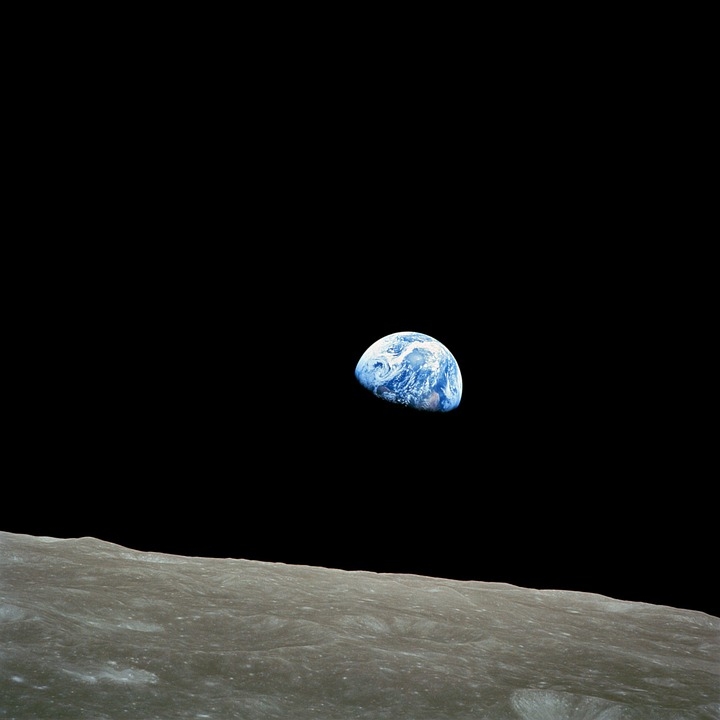One of the goals space agencies like NASA have is to further space exploration which will hopefully lay the groundwork for potential colonization of our neighboring planets. Most recently, NASA is now partnering with mobile company Nokia in installing 4G on the surface of the Moon.
Nokia announced that it was chosen by NASA to launch a portable and wireless 4G network to be placed on the lunar surface. The US subsidiary of the brand was given a $14.1 million contract to develop the network which would be described as “ultra-compact, low-power, space-hardened.” This move is also part of NASA’s upcoming space missions under the Artemis program, which aims to send the next humans on the Moon, including the first woman. This is also a way to further establish a human presence on the Moon which is expected to be done y 2030.
The mobile company also revealed that the network equipment would be installed on the lunar surface by the latter part of 2022. It will be installed using a lunar hopper created by Intuitive Machines. The 4G network may also be upgraded to a 5G network in the future.
“The network will self-configure upon deployment,” said Nokia in a statement. The company added that the technology of the network will also have important control and command functions, as well as remote control of the lunar rovers, and real-time navigation and streaming of videos in high definition.
NASA’s Artemis program succeeds the successful Apollo space program that was established decades ago. The last time humans set foot on the lunar surface was during the Apollo 17 mission, the fifth and last Apollo mission that saw astronauts Harrison Schmitt and Eugene Cernan as one of the last to walk on the surface. In the program “NASA’s Unexplained Files,” an image of the lunar surface taken by the Reconnaissance Orbiter in 2009 revealed an unusual set of footprints on the Moon that were far from where Cernan and Schmitt were.
The footprints were found 30 miles away from their landing spot. According to author William Birnes, who also weighed in on the discovery, “It’s not just that they are shaped like footprints, but it’s the path. It’s one foot, then the other -- it’s almost like somebody has been walking on the Moon,” said Birnes.



 Black hole, neutron star or something new? We discovered an object that defies explanation
Black hole, neutron star or something new? We discovered an object that defies explanation  The mystery of consciousness shows there may be a limit to what science alone can achieve
The mystery of consciousness shows there may be a limit to what science alone can achieve  Genetic diseases: How scientists are working to make DNA repair (almost) a piece of cake
Genetic diseases: How scientists are working to make DNA repair (almost) a piece of cake  If life exists on Jupiter’s moon Europa, scientists might soon be able to detect it
If life exists on Jupiter’s moon Europa, scientists might soon be able to detect it  Dark energy is one of the biggest puzzles in science and we're now a step closer to understanding it
Dark energy is one of the biggest puzzles in science and we're now a step closer to understanding it  Orbital resonance − the striking gravitational dance done by planets with aligning orbits
Orbital resonance − the striking gravitational dance done by planets with aligning orbits  Tatahouine: 'Star Wars meteorite' sheds light on the early Solar System
Tatahouine: 'Star Wars meteorite' sheds light on the early Solar System  Why is the universe ripping itself apart? A new study of exploding stars shows dark energy may be more complicated than we thought
Why is the universe ripping itself apart? A new study of exploding stars shows dark energy may be more complicated than we thought  The brightest object in the universe is a black hole that eats a star a day
The brightest object in the universe is a black hole that eats a star a day  The brain is the most complicated object in the universe. This is the story of scientists’ quest to decode it – and read people’s minds
The brain is the most complicated object in the universe. This is the story of scientists’ quest to decode it – and read people’s minds  Six space missions to look forward to in 2024
Six space missions to look forward to in 2024  Larger and more frequent solar storms will make for potential disruptions and spectacular auroras on Earth
Larger and more frequent solar storms will make for potential disruptions and spectacular auroras on Earth  Spacesuits need a major upgrade for the next phase of exploration
Spacesuits need a major upgrade for the next phase of exploration 






























